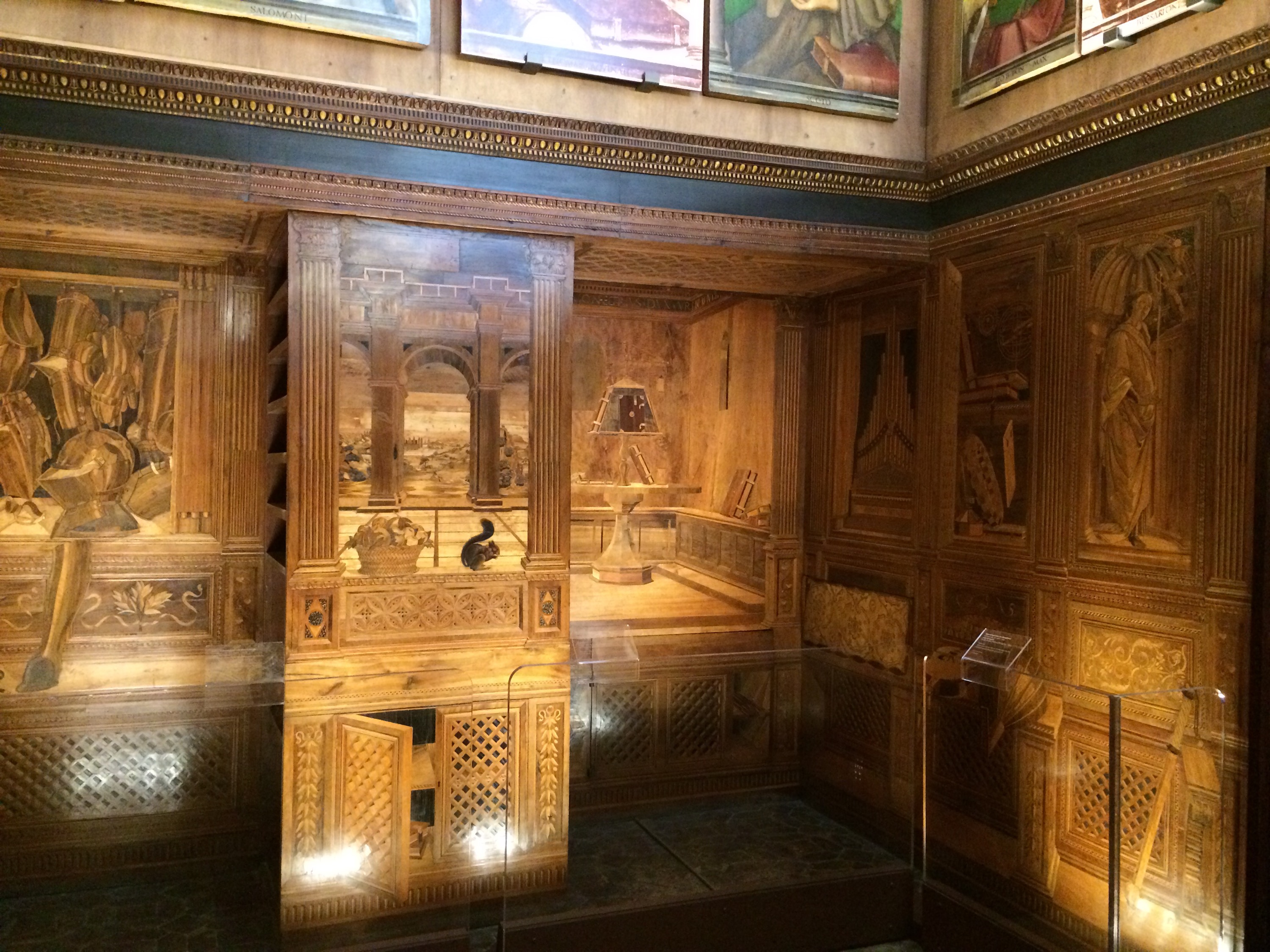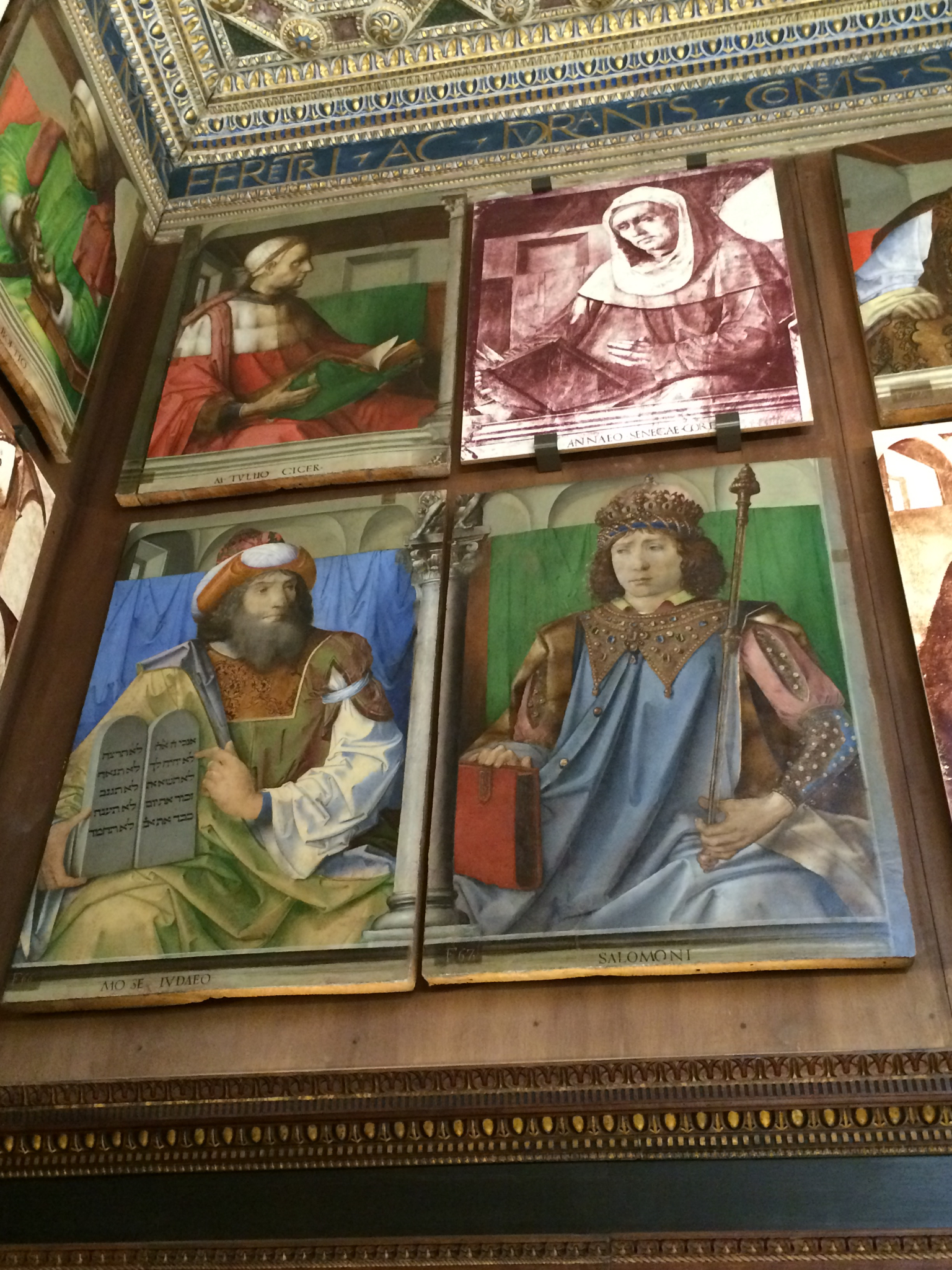
At the heart of Federico’s Palace at Urbino, of which I spoke in my last post, was his studiolo, a tiny inner sanctum for study and reflection, and a place which served to advertise his erudition to visitors.
Created by 1476, its lower level is clad entirely in elaborately detailed wood inlay while above hang 28 portraits of Illustrious Men (14 of the originals are here, the others are reproduced in sepia). Moses and Solomon rub shoulders with Aristotle and Plato, with Dante and Petrarch. Contemporary figures are also represented: Federico’s tutor Vittorino da Feltre is paired with Euclid, Pope Sixtus IV with Saint Albert the Great.

Four of the Uomini Illustri. Clockwise from top left: Cicero, Seneca, Solomon, Moses. Justus of Ghent and Pedro Berruguete. The sepia image is a copy, the original is in the Louvre.
The wooden intarsia, which employs over forty different types of wood and was the work of Benedetto di Maiano and his workshop, depicts an assortment of cupboards, left open in a studiedly casual manner to reveal their contents. Books, musical scores, and mathematical instruments jostle with weaponry. Federico advertises his military prowess and intellectual pursuits in an amusing manner which is itself an expression of his aesthetic credentials: he is au fait with the new techniques of linear perspective; in his unusual choice of materials for his study he is not following trends but setting them.

Detail depicting, amongst other things, an inkpot, an astrolabe, and a rosary.
His status is alluded to by the inclusion of the Order of the Garter, England’s highest chivalric order, awarded to Federico by King Edward IV. Next to it a scroll bears an inscription modified from Virgil, “through virtue, one shall reach the stars”, below which hangs a sword.

Detail with Order of the Garter, scroll, and sword.
Federico the intellectual rubs shoulders proudly with Federico the man of war.

Federico himself is also shown, wearing a toga and in profile, his armour cast aside on a neighbouring shelf as though he has just returned from battle.

To the right a squirrel gnaws a nut on a faux loggia, through which we view the rolling landscape of the Marche.

If you are closer to New York City than Urbino, a similar room was made for the Ducal Palace at Gubbio. This was purchased, transported across the Atlantic, and reassembled at the Metropolitan Museum of Art in 1939.
____________________
Ducal Palace,
piazza Rinascimento,
Urbino
Mon 8.30-2, Tues-Sun 8.30-7.15 (ticket office closes one and half hours earlier).


I wish I had known this a few months ago! I was at the Met, but missed seeing the reassembled ducal room.
It’s a massive and marvellous place, something for your next trip!
In the detail of the panel for the order of the garter above, there is a fascia (rolled bundle) depicted in the lower right hand corner. I have been searching for the identity of this object for years. A second one appears to be lying flat, bottom end towards the viewr. What is this made of and used for? Can anyone help without speculation?
Apologies for the slow reply, no idea I’m afraid.
Thanks for the mention!